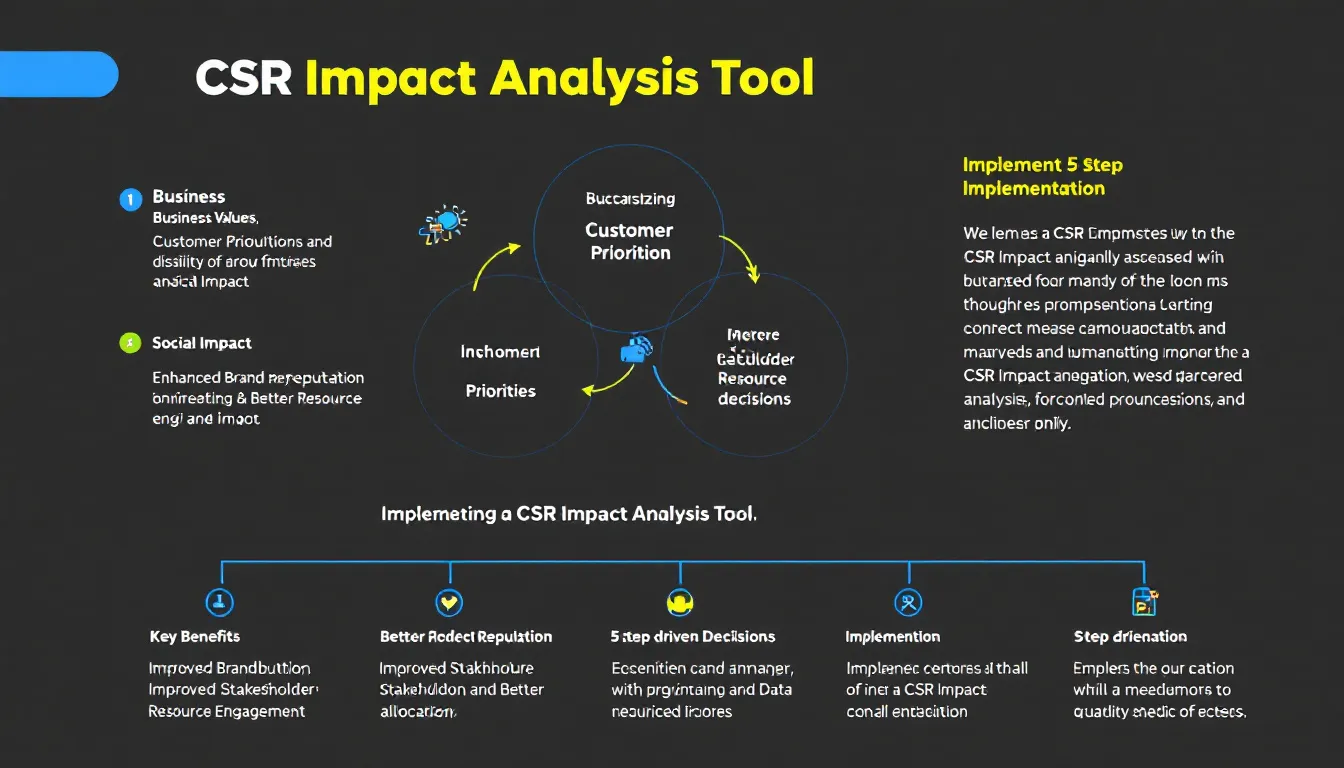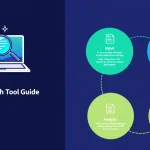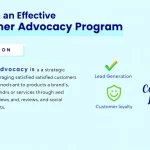Is this tool helpful?
How to Use the CSR Impact Analysis Tool Effectively
This tool helps you connect your business values with your customers’ social and environmental priorities. Here’s how to fill out each section to get the most insightful analysis:
Step-by-Step Input Guide
- Company Name: Provide your official business name. For example:
- EcoWave Enterprises Ltd.
- Bright Future Manufacturing
- Industry Sector: Indicate your main business industry. For example:
- Organic Food Production
- Green Building Solutions
- Target Audience Demographics: Describe your customer group’s key traits, such as:
- Professionals aged 30-45
- Suburban families focused on wellness
- Environmentally conscious urban dwellers
- Values like sustainability, fair trade, or innovation
- Current CSR Initiatives: List any existing social responsibility programs you manage. For example:
- Community solar panel installation
- Waste reduction and recycling campaigns
- Social and Environmental Priorities: State the causes your customers care about. For example:
- Clean water access
- Zero waste initiatives
About the CSR Impact Analysis Tool: Purpose and Benefits
The CSR Impact Analysis Tool helps your business identify how well your social responsibility efforts resonate with your customers’ values. It evaluates your company’s profile and audience priorities to create insightful recommendations, improving your social impact strategies.
Key Benefits You Gain
- Aligning Business Goals with Customer Values: Ensure your CSR programs reflect what matters most to your clients.
- Improving Stakeholder Engagement: Discover opportunities to involve employees, customers, and partners in meaningful ways.
- Optimizing Resource Use: Prioritize initiatives with the highest social return on investment.
- Enhancing Brand Trust: Build a reputation for authenticity through value-driven CSR.
- Guiding Strategic Decisions: Leverage data-driven insights for planning and communication.
Practical Applications of the CSR Analysis Tool
This tool supports your CSR planning by delivering clear, actionable insights based on your inputs. Use it to:
- Analyze Customer Values: Understand where your audience’s social and environmental interests lie.
- Review Existing Initiatives: Identify gaps or strengths in your current CSR programs.
- Plan Future Strategies: Prioritize initiatives that increase social impact and customer alignment.
- Communicate Effectively: Craft messages that resonate with stakeholder concerns.
Example Use Cases
Example 1: Consumer Goods Company
- Entered target demographics as “Millennials aged 25-40 interested in organic and ethical products”.
- Noted current CSR programs: “Packaging waste reduction, supplier fair trade certification”.
- Identified priorities like “Climate action and ethical labor practices”.
- Received recommendations to expand community education programs and enhance transparency in sourcing.
Example 2: Renewable Energy Startup
- Target audience described as “Eco-conscious tech professionals living in urban centers.”
- Existing initiatives included “Solar power workshops and tree planting events”.
- Priorities focused on “Sustainable urban development and reducing carbon footprint.”
- Suggestions emphasized stakeholder collaboration and digital engagement tools to amplify impact.
Maximizing the Value from Your CSR Analysis
Integrate Insights Into Your Strategy
- Use the tool’s alignment scores to focus on high-impact CSR areas.
- Engage your team regularly around updated insights and feedback.
- Track changes in customer priorities to keep initiatives relevant.
Communicate Outcomes Clearly
- Share analysis results with stakeholders transparently.
- Highlight measurable impact goals aligned with customer values.
- Use insights to refine messaging that strengthens your brand identity.
Frequently Asked Questions About CSR Impact Analysis
How often should I update my CSR analysis?
Update your CSR analysis quarterly or after major changes in market trends or customer feedback to keep your initiatives aligned and effective.
Can small businesses benefit from this tool?
Yes. The tool scales to fit companies of all sizes, providing actionable insights to boost social impact and customer trust.
How do I prioritize different CSR initiatives?
Prioritize initiatives based on the tool’s value alignment scores and potential social impact, focusing your resources on the most meaningful programs.
What’s the best way to communicate CSR initiatives?
Use stakeholder-specific communication strategies suggested by the analysis to engage employees, customers, and partners effectively.
How can I measure the success of CSR programs?
Track KPIs and impact metrics tailored to your industry and initiatives, as recommended by the tool.
Should I focus on local or global initiatives?
Choose the scope based on your customers’ geography and resource availability. The tool helps identify the most impactful focus for your business.
Best Practices for Corporate Social Responsibility Implementation
Strategic Planning Essentials
- Integrate regular feedback from stakeholders to stay aligned.
- Assess impact continuously through measurable indicators.
- Optimize resources to maximize social and environmental outcomes.
- Ensure transparent communication across all channels.
- Set clear, achievable goals tied to customer values and business objectives.
Execution Guidelines
- Implement initiatives in phases to monitor progress closely.
- Maintain consistent stakeholder engagement throughout the process.
- Use impact measurement frameworks to assess outcomes.
- Adapt programs based on evolving customer priorities and feedback.
Important Disclaimer
The calculations, results, and content provided by our tools are not guaranteed to be accurate, complete, or reliable. Users are responsible for verifying and interpreting the results. Our content and tools may contain errors, biases, or inconsistencies. Do not enter personal data, sensitive information, or personally identifiable information in our web forms or tools. Such data entry violates our terms of service and may result in unauthorized disclosure to third parties. We reserve the right to save inputs and outputs from our tools for the purposes of error debugging, bias identification, and performance improvement. External companies providing AI models used in our tools may also save and process data in accordance with their own policies. By using our tools, you consent to this data collection and processing. We reserve the right to limit the usage of our tools based on current usability factors.







